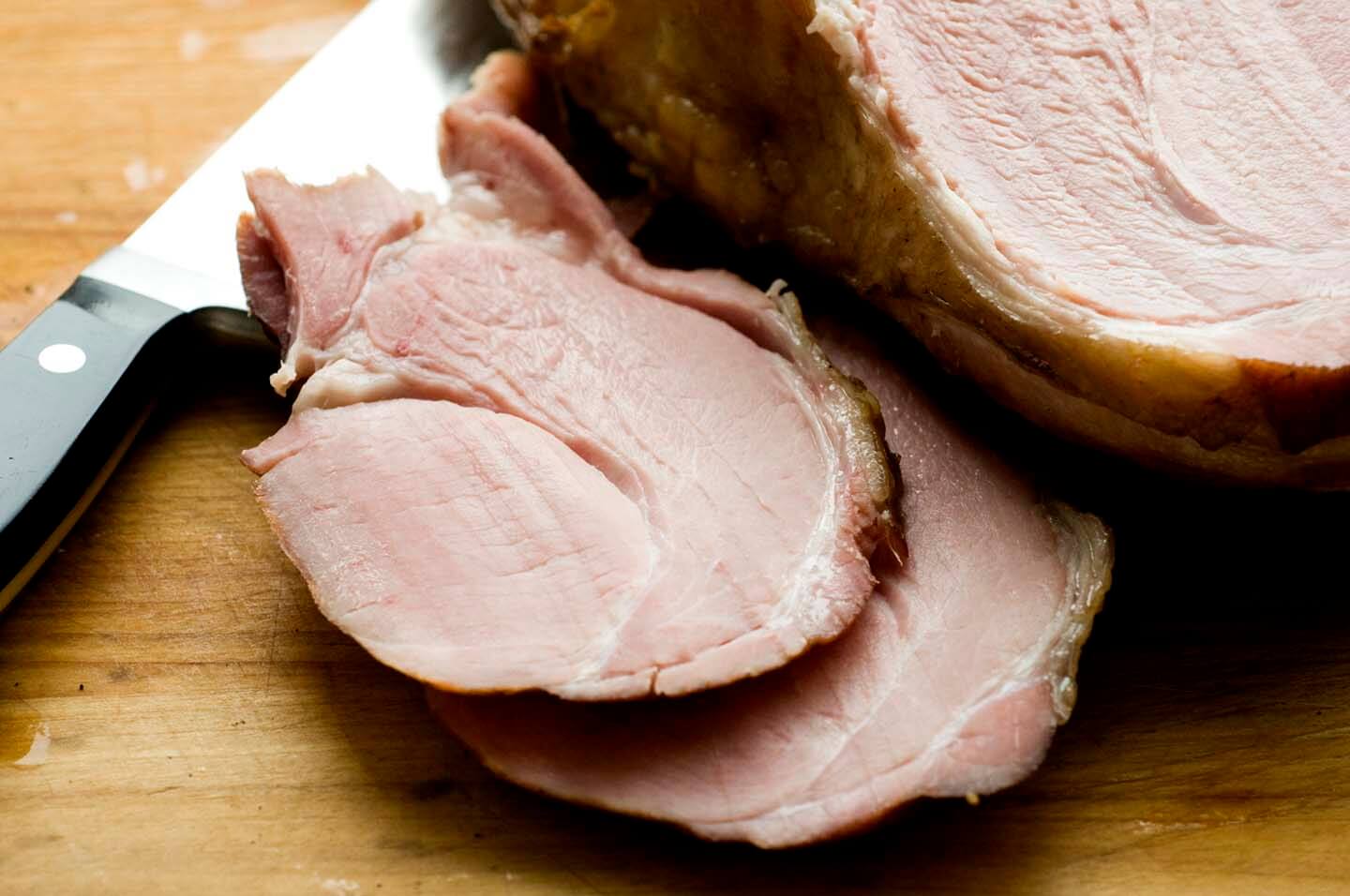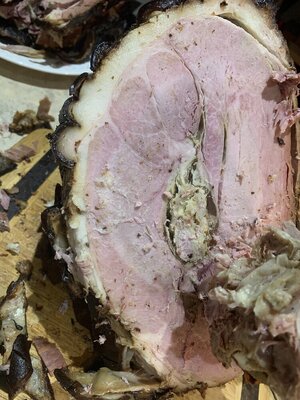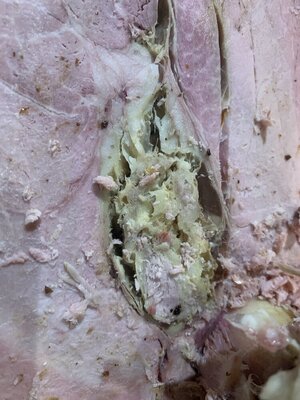- Jan 7, 2024
- 6
- 1
Does the color of the fat around the artery indicate this ham is bad?
I just completed my first wet/city cured ham followed by hot smoking. The ham was then frozen.
I followed this recipe, adjusted to the weight of the ham, and wet cured in a cooler.

 www.homesicktexan.com
www.homesicktexan.com
I just completed my first wet/city cured ham followed by hot smoking. The ham was then frozen.
I followed this recipe, adjusted to the weight of the ham, and wet cured in a cooler.

How to cure a ham
A recent trip to the store presented me with a beautiful selection of hams, recently brought in by a local pig farmer. As I picked out the one I wanted, the butcher said, “You realize
- 1 (5-pound) ham, uncured and uncooked
- 2 litres of water
- 3/4 cup kosher salt
- 1 cup turbinado sugar
- 1/4 cup molasses
- 1/4 teaspoon ground cloves
- 1 tablespoon Insta Cure No. 1 pink salt
Attachments
Last edited:






